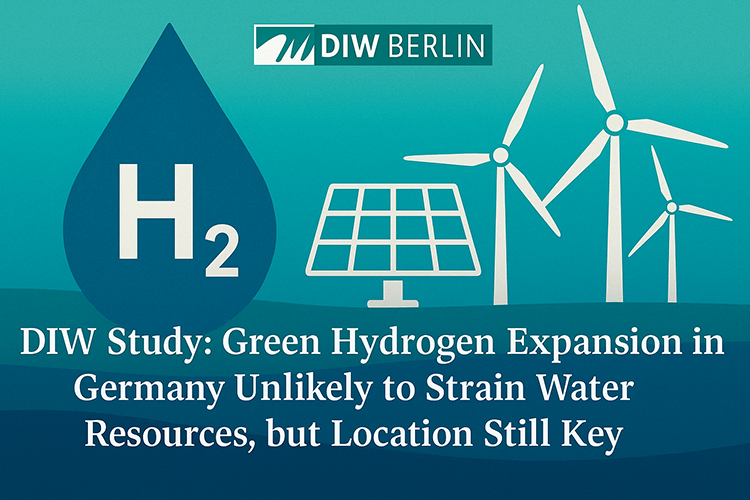Green hydrogen expansion in Germany unlikely to strain water resources, but location still key
A study by the German Institute for Economic Research (DIW Berlin) concludes that Germany’s planned expansion of green hydrogen production will not create widespread water shortages, although local water availability could influence where new electrolysis plants are built. The analysis, based on model projections for 2030, finds that water demand for electrolysis will remain low in relation to total water consumption in nearly all regions, even under scenarios of significant hydrogen production growth.
Germany currently consumes about 46 terawatt hours of hydrogen annually, most of it “grey hydrogen” made from natural gas. By 2030, demand is expected to more than double, with a substantial share coming from green hydrogen produced using renewable electricity and water. The study finds that if the federal government’s planned hydrogen core network is completed, production could be concentrated in areas where both renewable energy and water are abundant, particularly in northern states. Without the network, production would be more decentralized and closer to industrial consumers, but even then, water demand for electrolysis would generally remain below 0.5% of state-level water use.
The cost of water for electrolysis is minimal, averaging around 0.6% of total production costs, assuming the pipeline network is in place. The DIW researchers recommend accelerating network development to allow siting in regions with stable water resources and integrating water stress considerations more explicitly into permitting and subsidy processes. They also suggest improving transparency on water pricing to assess its role in investment decisions.
Electrolysis uses electricity to split water into hydrogen and oxygen, requiring about nine liters of purified water per kilogram of hydrogen produced, plus additional water for cooling. In cases of freshwater scarcity, desalinated seawater could be an alternative, though at higher cost. The study estimates that meeting Germany’s target of ten gigawatts of electrolysis capacity by 2030 would require about 26 million cubic meters of water annually — roughly 0.15% of current national water withdrawals.
Source: DIW Berlin









